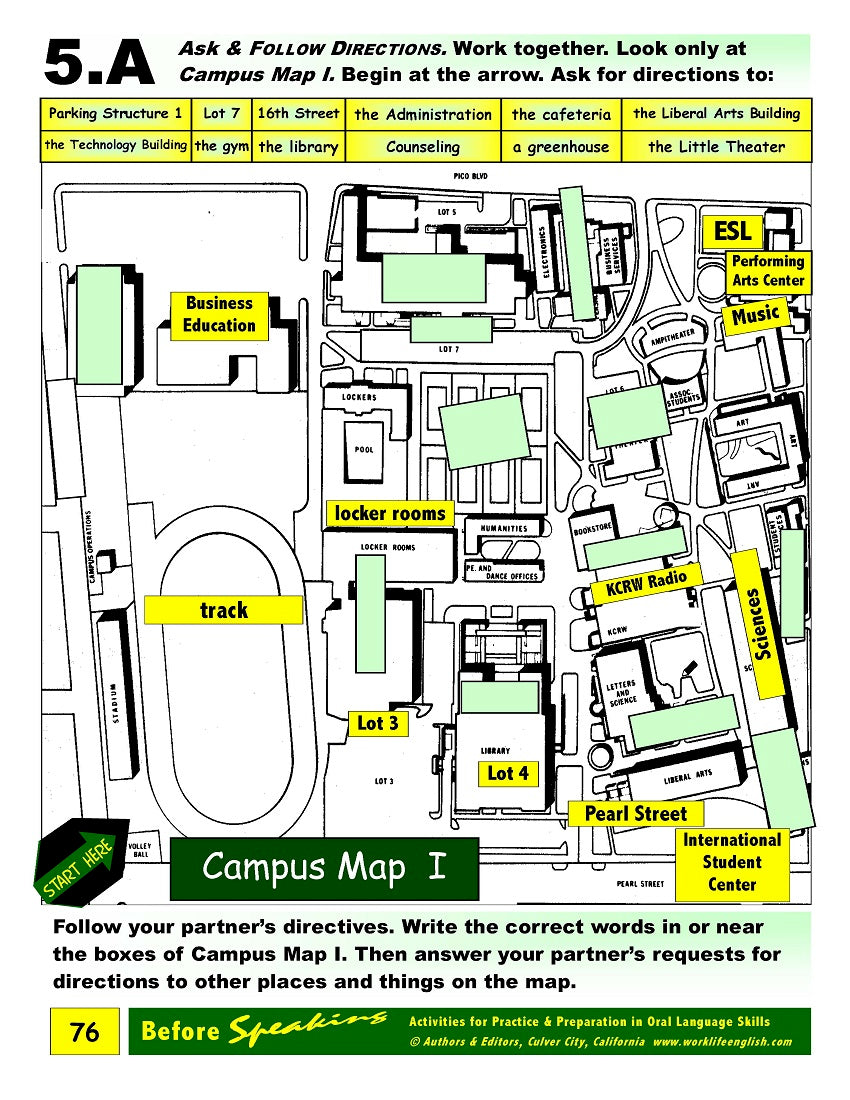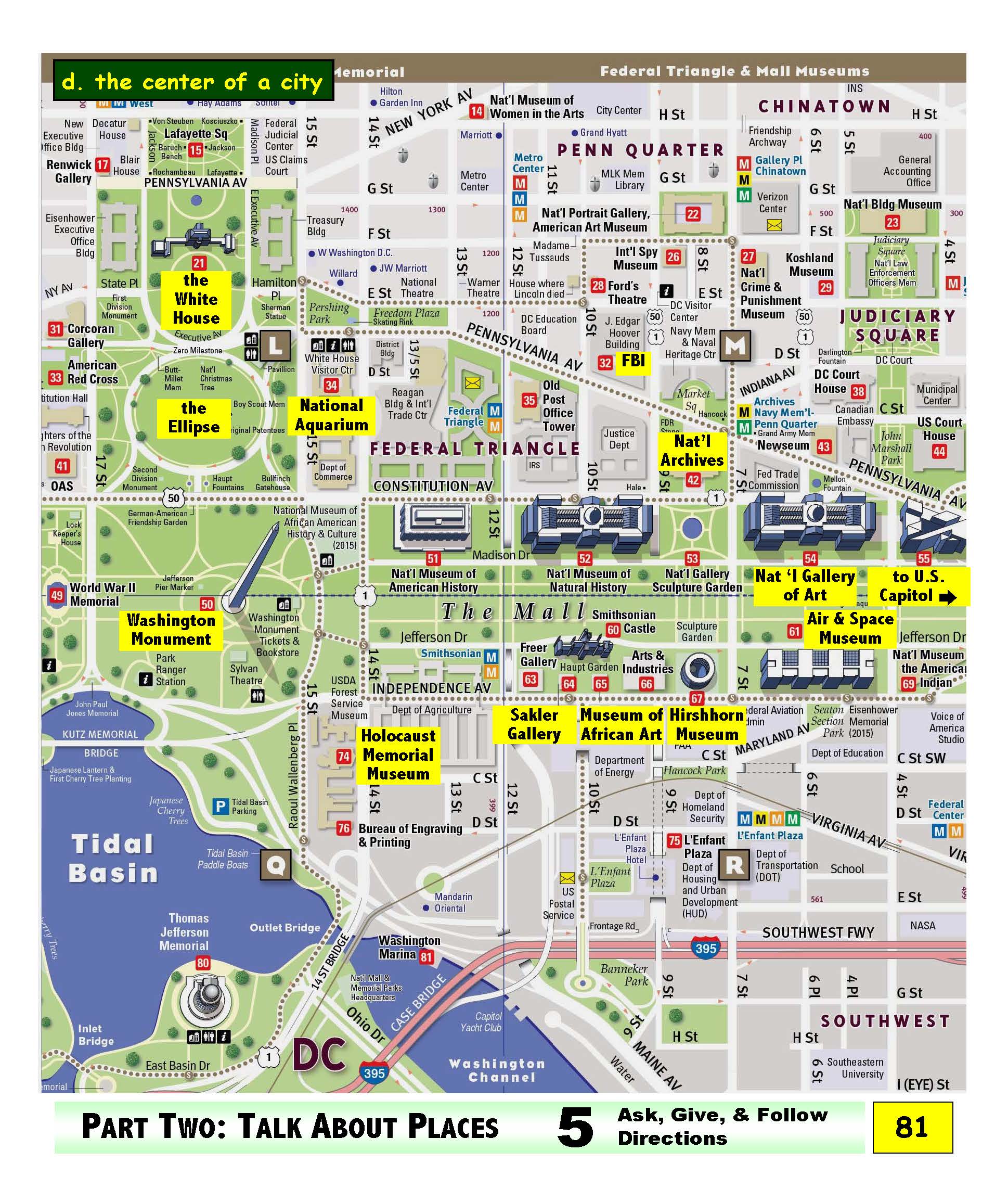1
/
of
5
Work/Life English
E-02.06 Ask, Give & Follow Directions (with Place Names) in Sequence
E-02.06 Ask, Give & Follow Directions (with Place Names) in Sequence
Regular price
$5.00 USD
Regular price
Sale price
$5.00 USD
Unit price
/
per
Before Speaking: Activities for Practice & Preparation in Oral Language Skills. Part Two, Talk About Places: 5: Ask, Give, & Follow Directions, pages 75-88 + 9 Answer Key Pages with Suggested (Model) Responses to Directions & Site, City, & Road-Map Activities & Games
14 + 9 (23) pages
Who It’s For: Language-Arts Teachers, Learners, & Helpers Continuing to “Talk About Things” by Describing Items’ Appearances & Uses (While Emphasizing Vowel Sounds)
Why It’s Useful: In addition to describing places, evolving language learners are likely to encounter situations in which (Street, Site or Road Map) Directions & Directives are called for. These require precision—in Place Names, orientation, distances, sequencing, and the like. Here are plenty of graphics to practice Route Planning with. Supplemental sections of suggested sample language from the Before Speaking Answer Key for Text Activities not only make the materials “self-instructional.” They also provide additional (“native-teacher”) input in collaborative language-improvement.
What You’ll Do:
[1] After perusing Language Notes, follow Instructions 5.A to Ask & Follow Directions on paired Campus Maps I & II. Continue doing so with Site Maps of a train-station shopping mall, a major city park, the “Las Vegas Strip,” central Washington D.C., the island of Oahu in Hawaii, and roads in the U.S.
[2] For 5-B & 5-C, review rules for uses of the in “proper nouns,” connectors that clarify (sequencing of) directives, and expressions of Distance & Time in Transportation. Plan & Explain Routes for others to mark on visuals before re-verbalizing them. Then in 5.D, hear and Tell How to Get Somewhere that you (want to) know about. Summary Vocabulary Lists: Directives may help by triggering ideas.
[3] When Ready for Speaking in Talk About Places, follow steps in ***5.E to learn from and give Mini-Speeches that involve routes or paths (with visuals of your own creation). Sample language for these (and previous Activities) can be extracted from suggested Answer Key models.
Couldn't load pickup availability










